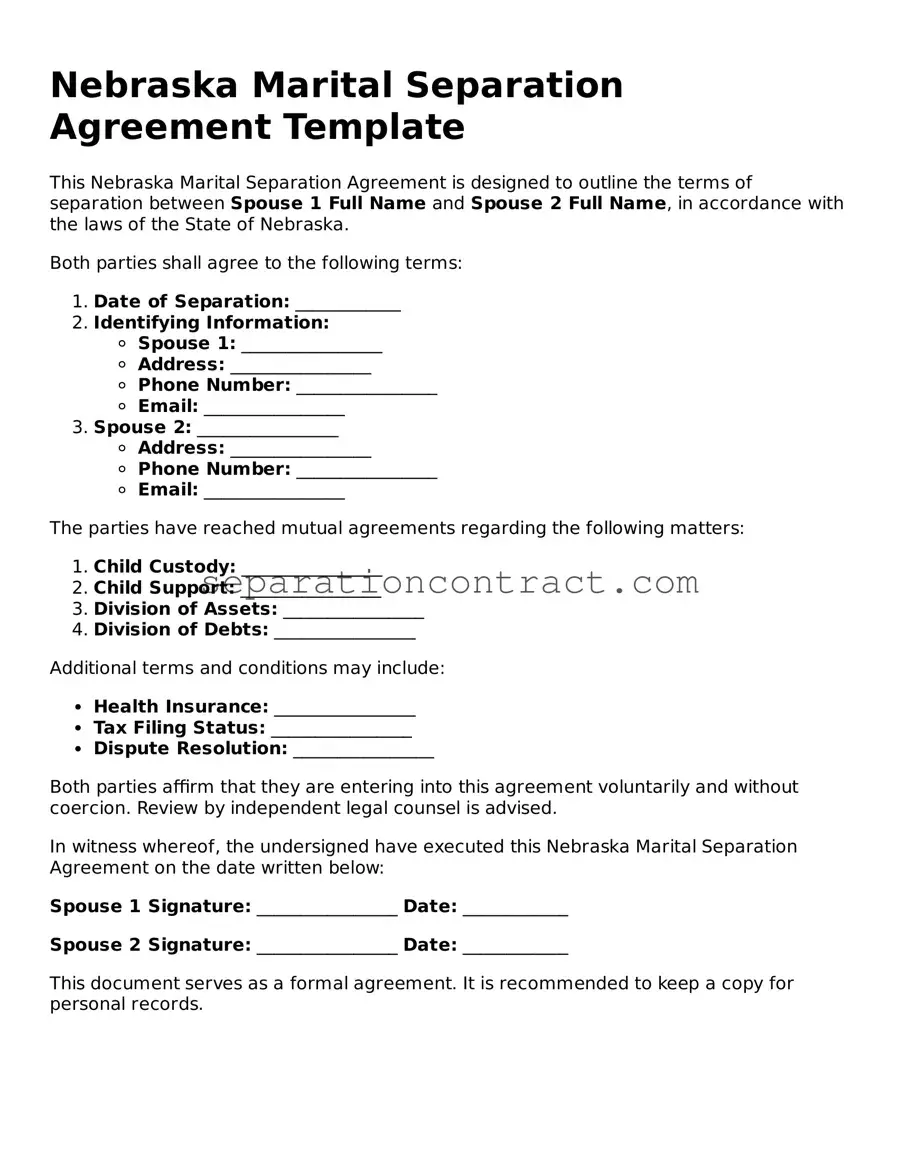Filling out the Nebraska Marital Separation Agreement form can be challenging. Many individuals make common mistakes that can lead to delays or complications. Being aware of these pitfalls can help ensure a smoother process.
One frequent mistake is not providing complete information. Each section of the form requires specific details about both parties, assets, and liabilities. Omitting information can lead to misunderstandings or disputes later on.
Another common error is failing to specify the date of separation. This date is crucial as it can affect property division and other legal matters. Be sure to clearly state when the separation occurred to avoid confusion.
People often overlook the importance of clearly defining child custody arrangements. Vague terms can lead to differing interpretations. It’s essential to outline custody, visitation schedules, and any other relevant details to prevent future conflicts.
Additionally, many forget to include all assets and debts. It’s important to list everything owned or owed by either party. Failing to do so can result in one party feeling shortchanged or lead to legal disputes down the line.
Some individuals make the mistake of not having the agreement notarized. A notarized agreement carries more weight in court. Ensure that both parties sign in the presence of a notary to validate the document.
Another mistake is using ambiguous language. Clear and concise language helps both parties understand their rights and responsibilities. Avoiding vague terms can prevent misinterpretations in the future.
People sometimes neglect to review the agreement before submission. Taking the time to read through the completed form can catch errors or omissions. A thorough review can save time and headaches later.
Some individuals also fail to consider future changes. Life circumstances can change, and agreements should reflect that possibility. Including terms for modification can provide flexibility as situations evolve.
Lastly, many do not seek legal advice before finalizing the agreement. Consulting with a legal expert can provide insights and ensure that the agreement meets all legal requirements. It’s a step worth taking for peace of mind.
